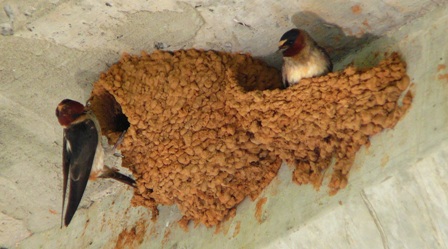HOME | connecting populations | seasonal interactions | climate change | disease | urbanization
energy extraction | agriculture | invasive species | air strikes
Throughout the yearly life cycle, migratory populations and individuals encounter a variety of stressors, from food limitation to adverse weather to environmental pollution.
One event can impact subsequent events and this is known as a seasonal interaction.
Prior research
Seasonal interactions can contribute in important ways to the behavior, ecology, and evolution of populations. For example, conditions during winter can influence events during migration and breeding, and vice versa. Because individuals experience ecologically distinct habitats separated in space and time, morphology, physiology, and other characteristics are affected differently, and there may be trade-offs acting throughout the annual cycle.
More research is needed
Today we know that breeding productivity of some migratory species, including songbirds and monarch butterflies, can be influenced in a large part by events that occurred during the previous season, thousands of miles away. And although most avian mortality likely occurs during migration, it is probably a consequence of prior events that occurred during the breeding or over-wintering period. Without a better understanding of how events interact throughout the annual cycle, we will not be able to understand how human activities or natural selection drive population trends and evolution.
HOME | connecting populations | seasonal interactions | climate change | disease | urbanization
energy extraction | agriculture | invasive species | air strikes


